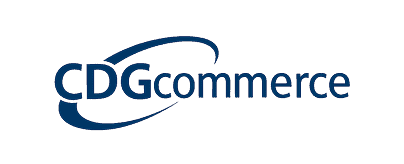Founded in 2013, Payment Depot entered a competitive market with the goal of bringing pricing transparency to merchant services. It targets business owners who are frustrated with tiered pricing, hidden fees, and unpredictable statements. Its service appeals to merchants who want a predictable monthly bill, straightforward terms, and flexible equipment options.
The company supports card-present, online, and mobile transactions, as well as integrations with various POS systems. Merchants can choose from several membership tiers based on processing volume, with no long-term contracts or early termination fees.
While the model offers clear advantages for mid- to high-volume businesses, low-volume merchants may find the monthly membership fee outweighs potential savings. Additionally, Payment Depot operates only in the U.S., which limits its usefulness for businesses with international operations.
Overall, Payment Depot positions itself as a transparent, cost-conscious solution for merchants who want control over their processing costs without being tied to restrictive contracts.
Payment Depot was founded in 2013 in Orange, California, with a mission to simplify the payment processing experience for small and medium-sized businesses. It was among the early providers to introduce a membership-based pricing model, moving away from percentage-based markups and aiming to make credit card processing more affordable for merchants.
Over the years, the company expanded its reach across various industries, from retail and hospitality to healthcare and professional services. Its growth has been fueled by transparent pricing, word-of-mouth referrals, and a focus on reducing merchant frustration with the traditional processing model.
In 2021, Payment Depot was acquired by Stax, another payment technology company that operates with a similar subscription-based model. This acquisition provided Payment Depot with additional resources, technology, and support infrastructure, further solidifying its place in the merchant services market.
The company’s competitive positioning rests on its ability to serve high-volume merchants more cost-effectively than many competitors. By eliminating percentage markups, it can offer predictable monthly costs, which is attractive to businesses that process tens of thousands of dollars per month.
However, its market reach is narrower than global providers like Stripe or PayPal, which cater to international merchants. Payment Depot focuses on U.S.-based businesses, which allows it to provide localized support and compliance but limits its scalability for cross-border commerce.
Payment Depot’s business model is centered on membership-based pricing. Instead of charging a percentage fee on each transaction, the company bills a flat monthly fee plus the direct interchange rates from card networks like Visa, Mastercard, American Express, and Discover.
Its flat monthly fee grants access to wholesale interchange rates with no percentage-based markups, eliminating the guesswork from billing. This approach reduces unexpected fees and makes it easier for merchants to manage processing costs with confidence.
Membership fees typically range from around $79 to $199 per month, depending on the plan. There are no long-term contracts, setup fees, or early termination penalties. However, merchants are responsible for interchange costs, which vary depending on the type of card and transaction.
This model can be highly cost-effective for high-volume merchants, as the savings on percentage markups can far exceed the flat membership fee. Conversely, low-volume businesses may find that the monthly subscription erodes any savings, making a percentage-based processor a better fit.
Overall, the simplicity and transparency of the model appeal to merchants tired of unpredictable bills and hidden charges, but it requires careful volume analysis to determine whether it’s the most economical option.
Payment Depot offers a comprehensive set of merchant services designed to handle in-person, online, and mobile transactions. Its offerings cater to a variety of industries and business sizes.
The platform’s flexibility allows merchants to use their own compatible hardware or purchase equipment through Payment Depot. Additionally, its recurring billing and invoicing capabilities make it suitable for subscription-based businesses and service providers.
By offering both physical and digital payment solutions, Payment Depot supports omnichannel commerce, enabling merchants to process payments in-store, on the go, or through their websites.
Payment Depot’s payment gateway allows merchants to process transactions securely through their websites or mobile applications. The gateway supports features like recurring billing, invoicing, and the ability to securely store customer payment information for future transactions.
The virtual terminal enables merchants to accept card-not-present payments directly from a web browser, making it a useful tool for phone orders, mail orders, or remote billing. This can be particularly beneficial for professional services, wholesale businesses, and any merchant who processes payments without the customer physically present.
Security is a core part of these tools, with PCI compliance, encryption, and tokenization included to protect sensitive data. Merchants can also set up user permissions to control access within their organization.
While the gateway and virtual terminal are functional and reliable, they are not as feature-rich as some dedicated ecommerce payment platforms. Businesses with complex online sales requirements may need to integrate additional tools or choose platforms with more advanced ecommerce capabilities.
Payment Depot offers merchants a range of payment hardware to suit different environments.
Merchants can either purchase equipment directly from Payment Depot or bring their own compatible devices, which provides flexibility for those switching providers. The hardware is sourced from reputable manufacturers like Clover, Dejavoo, and SwipeSimple, ensuring durability and compliance with industry standards.
For businesses that already have compatible terminals, the ability to reuse equipment can help reduce setup costs. However, not all devices are compatible, so merchants may need to confirm support before switching.
Payment Depot places a strong emphasis on payment security and compliance.
Merchants receive assistance in maintaining PCI compliance, which is crucial for avoiding penalties and safeguarding customer data. The combination of encryption and tokenization helps protect information during transmission and storage, reducing the risk of breaches.
Fraud prevention tools include alerts for suspicious activity and transaction monitoring, though advanced anti-fraud features may require integration with third-party systems for businesses with higher risk exposure.
Payment Depot provides multiple channels for customer support, ensuring merchants can access help when needed.
Feedback on Payment Depot’s customer service is generally positive, with many merchants praising its responsiveness and willingness to resolve issues promptly. However, some users have noted that support availability outside standard business hours is limited compared to 24/7 providers.
Getting started with Payment Depot is relatively straightforward. Merchants complete an application, submit relevant documentation, and once approved, receive their login credentials and any ordered equipment.
The dashboard interface is simple to navigate, with clear reporting tools and transaction summaries. Merchants can manage their accounts, review processing history, and set up recurring payments without significant training.
While the onboarding process is smooth for most merchants, some may experience delays if additional compliance checks are required. Clear communication during this stage helps minimize friction.
Payment Depot is particularly well-suited for:
It may be less cost-effective for micro-merchants or seasonal businesses with low monthly processing volumes.
Competitors like Stax, Helcim, and Dharma Merchant Services also offer transparent pricing, but each has differences in fee structures, features, and support. Stripe and PayPal cater more to ecommerce and international markets, but often at higher transaction costs for certain volumes.
Payment Depot’s strength lies in predictable pricing and cost savings for high-volume U.S. businesses, while competitors may be better suited for startups, global merchants, or those needing advanced online sales features.
Payment Depot delivers a clear, transparent pricing structure that can be a game-changer for high-volume merchants. Its subscription model, combined with direct interchange rates, provides predictable costs and eliminates many of the frustrations associated with traditional processors. That said, it’s not the best fit for everyone. Low-volume merchants may not benefit from the monthly membership fee, and businesses needing extensive ecommerce tools or 24/7 support might find better options elsewhere. For the right business profile, however, Payment Depot offers a compelling blend of savings, reliability, and flexibility.









